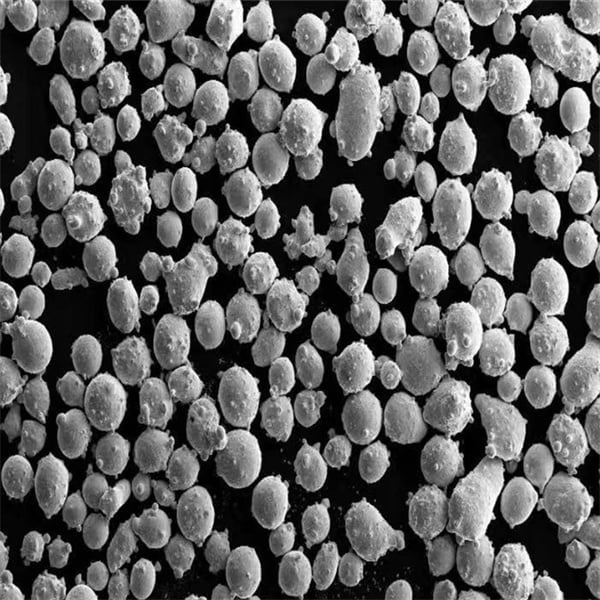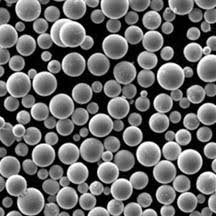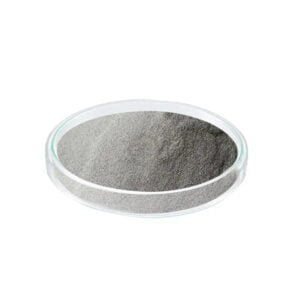Keramiskt belagda induktionstimbaler
Innehållsförteckning
Föreställ dig en degel som kombinerar det bästa av två världar: den högeffektiva uppvärmningen av induktion med den överlägsna kemiska resistensen och värmeisoleringen av keramik. Det är magin med den keramiskt fodrade induktionsdegeln. Men innan vi går in i dess krångligheter, låt oss sätta scenen.
Induction Melting: A Modern Marvel
Induktionssmältning utnyttjar elektromagnetismens kraft för att värma metaller. Här är kärnan: en växelström som flyter genom en spole genererar ett magnetfält. När ett ledande material (som metall) placeras inom detta fält, induceras virvelströmmar inom det, vilket orsakar snabb uppvärmning.
Induktionssmältning har flera fördelar:
- Ren och exakt uppvärmning: Ingen direkt flamkontakt leder till minimal kontaminering och exakt temperaturkontroll.
- Energieffektivitet: Induktion fokuserar uppvärmning på metallen, vilket minimerar värmeförlusten till miljön.
- Snabb smältning: Snabba uppvärmningscykler leder till ökad produktivitet.

Utmaningen: Materialkompatibilitet
Induktionsspolar är vanligtvis gjorda av koppar eller aluminium. Även om dessa metaller utmärker sig för att generera magnetiska fält, är de inte precis idealiska för att hålla smält metall. Här är varför:
- Reaktivitet: Vissa smälta metaller reagerar med koppar eller aluminium, vilket leder till förorening och minskad degellivslängd.
- Oxidering: Höga temperaturer kan oxidera spolmaterialet, vilket äventyrar dess prestanda.
Enter the Ceramic Lining: A Crucible Fit for a King (eller Queen of Metalworking)
En keramiskt fodrad induktionsdegel tar itu med dessa utmaningar genom att införliva ett keramiskt skikt mellan induktionsspolen och metallen. Denna geniala design erbjuder flera fördelar:
- Kemisk beständighet: Många keramik har utmärkt motståndskraft mot smält metall, vilket förhindrar kontaminering.
- Värmeisolering: Det keramiska skiktet fungerar som en barriär, minimerar värmeförlusten till den omgivande miljön och förbättrar energieffektiviteten.
- Hållbarhet: Högkvalitativ keramik tål den intensiva värmen och de hårda förhållanden som förknippas med induktionssmältning.
Att välja rätt keramiskt foder: En balansgång
Inte all keramik är skapad lika. Det ideala keramiska fodret för din applikation beror på flera faktorer:
- Metall som smälts: Olika metaller har olika grad av reaktivitet. Välj en keramik med överlägsen motståndskraft mot den specifika metall du ska arbeta med.
- Temperaturkrav: Keramik har olika termiska egenskaper. Se till att det valda fodret tål smälttemperaturen för din metall.
- Oxidationsmotstånd: Vissa keramik är bättre lämpade för applikationer som är benägna att oxidera.
Här är en tabell som beskriver några vanliga keramiska fodermaterial och deras viktigaste egenskaper:
| Keramiskt fodermaterial | Viktiga egenskaper | Tillämpningar |
|---|---|---|
| Aluminiumoxid (Al2O3) | Hög smältpunkt, utmärkt kemisk beständighet, bra värmeledningsförmåga | Aluminium, kopparlegeringar, järnmetaller (utom stål med hög kolhalt) |
| Zirkoniumdioxid (ZrO2) | Utmärkt högtemperaturprestanda, bra kemisk beständighet | Stålsmältning, reaktiva metaller |
| Mullite (3Al2O3.2SiO2) | Hög värmechockbeständighet, bra kemisk beständighet | Icke-järnmetaller, glassmältning |
| Kiselkarbid (SiC) | Hög värmeledningsförmåga, utmärkt slitstyrka | Högtemperaturapplikationer, applikationer som kräver snabba uppvärmnings-/kylningscykler |
kraften i induktionssmältning
Induktionssmältning lyser i metallpulvers rike. Här är varför:
- Exakt kontroll: Induktionsuppvärmning möjliggör finjusterad temperaturkontroll, avgörande för att bevara egenskaperna hos ömtåliga metallpulver.
- Minimal kontaminering: Induktionsuppvärmningens kontaktlösa karaktär minimerar föroreningsriskerna, vilket är avgörande för pulver med hög renhet.
- Jämn smältning: Induktion skapar konsekvent uppvärmning i hela pulverbädden, vilket främjar jämn smältning och förbättrade materialegenskaper.
Låt oss nu utforska några specifika metallpulver som kan dra nytta av keramiskt fodrade induktionsdeglar:
- Titanpulver: Titanpulver används ofta i rymd- och medicinska tillämpningar och kräver ren, exakt smältning för att bibehålla sitt höga hållfasthet-till-viktförhållande och biokompatibilitet. Keramiskt fodrade induktionsdeglar är idealiska för att förhindra kontaminering och uppnå jämn smältning.
- Pulver av rostfritt stål: Används i olika industrier kräver pulver av rostfritt stål exakt kontroll över krom- och nickelinnehåll. Den kontrollerade atmosfären och minimala kontamineringen som erbjuds av keramiskt fodrade induktionsdeglar är perfekta för att bevara dessa avgörande element.
- Nickelbaserade pulver: I högtemperaturapplikationer som jetmotorer och turbiner kräver nickelbaserade pulver exceptionell styrka och oxidationsbeständighet. Keramiskt fodrade deglar hjälper till att bibehålla integriteten hos dessa pulver under smältning.
- Aluminiumpulver: Används i olika applikationer från bildelar till elektronik, aluminiumpulver drar nytta av den snabba uppvärmningen och effektiva smältningen som induktion erbjuder. Keramiska foder förhindrar kontaminering och säkerställer konsekvent pulverkvalitet.
Beyond Metal Powders: Avslöjar olika applikationer
Medan metallpulver utgör ett betydande område för keramiskt fodrade induktionsdeglar, sträcker sig deras tillämpningar långt utöver:
- Smyckesgjutning: Den rena och exakta uppvärmningen av induktion, tillsammans med den överlägsna kemiska motståndskraften hos keramiska foder, gör dessa deglar perfekta för att smälta ädelmetaller som guld, silver och platina utan att oroa sig för föroreningar.
- Lödning och lödning: Induktionsdeglar utmärker sig när det gäller att snabbt smälta hårdlödning och lödlegeringar, och det keramiska fodret förhindrar oönskade reaktioner mellan det smälta materialet och själva degeln.
- Värmebehandling: Den utmärkta temperaturkontrollen som erbjuds av keramiskt fodrade induktionsdeglar gör dem lämpliga för exakta värmebehandlingsprocesser för olika metaller.
Fördelar med keramiskt fodrade induktionsdeglar
Så varför välja en keramiskt fodrad induktionsdegel framför traditionella alternativ? Här är en uppdelning av de viktigaste fördelarna:
- Överlägsen kemisk resistens: Skyddar din metall från kontaminering och säkerställer integriteten hos din slutprodukt.
- Förbättrad energieffektivitet: Det keramiska fodret minimerar värmeförlusten, vilket leder till lägre energiförbrukning och minskade driftskostnader.
- Förbättrad temperaturkontroll: Exakt uppvärmning möjliggör optimala smältförhållanden och konsekventa materialegenskaper.
- Minskad oxidation: Den keramiska barriären minimerar interaktionen mellan den smälta metallen och atmosfären, vilket minskar oxidationsrisken.
- Längre degellivslängd: Det slitstarka keramiska fodret förlänger degelns livslängd jämfört med traditionella alternativ.
- Renare arbetsmiljö: Den beröringsfria uppvärmningen av induktionen minimerar ångorna och förbättrar verkstadens totala luftkvalitet.
Nackdelar med keramiskt fodrade induktionsdeglar
Även om keramiskt fodrade induktionsdeglar erbjuder många fördelar, är det viktigt att överväga de potentiella nackdelarna:
- Högre förskottskostnad: Jämfört med traditionella deglar kan keramiskt fodrade alternativ ha en högre initial prislapp.
- Mottaglighet för termisk chock: Snabba temperaturförändringar kan skada det keramiska fodret, vilket kräver noggrann hantering och förvärmningsprocedurer.
- Begränsade storleksalternativ: På grund av tillverkningens komplexitet kanske keramiskt fodrade deglar inte är tillgängliga i alla storlekar lika lätta som traditionella alternativ.
Applikationer kontra begränsningar
Beslutet att använda en keramikfodrad induktionsdegel följer dina specifika behov. Här är en tabell som sammanfattar de viktigaste övervägandena:
| Faktor | Applikationer som gynnar keramiska foder | Begränsningar att överväga |
|---|---|---|
| Metalltyp | Reaktiva metaller, metaller som är utsatta för kontaminering | Kanske inte är lämplig för alla metaller |
| Temperaturkrav | Tillämpningar för höga temperaturer | Mottaglig för termisk chock |
| Produktionsvolym | Applikationer med låg till medelvolym | Begränsade storleksalternativ kanske inte är idealiska för produktion i stora volymer |
| Budget | Applikationer där produktkvalitet och långsiktiga kostnadsbesparingar är av största vikt | Högre initialkostnad jämfört med traditionella deglar |
Att hitta den perfekta degelpartnern
Tillgången på keramiskt fodrade induktionsdeglar kan variera beroende på din plats och specifika krav. Här är några tips för att hitta seriösa leverantörer:
- Branschorganisationer: Leta efter leverantörer som är anslutna till branschorganisationer som är relevanta för ditt område (t.ex. American Foundry Society, National Association of Manufacturers).
- Onlinemarknadsplatser: Flera onlineplattformar är specialiserade på industriell utrustning, inklusive keramiskt fodrade deglar.
- Tillverkarens webbplatser: Många tillverkare av induktionsugnar erbjuder också kompatibla deglar.
Prissättningsöverväganden: En balansakt
Som tidigare nämnts har keramiskt fodrade induktionsdeglar i allmänhet en högre initial kostnad jämfört med traditionella alternativ. Men flera faktorer kan påverka priset:
- Degelstorlek: Större deglar kostar naturligtvis mer.
- Keramiskt fodermaterial: Vilken typ av keramik som används kan påverka priset.
- Tillverkarens rykte: Ansedda varumärken med högkvalitativa material kan kräva en premie.
Här är en tabell som ger en allmän prisklass för olika storlekar av keramiskt fodrade induktionsdeglar (Obs! Priserna kan variera beroende på leverantör och material):
| Kapacitet för smältdegel | Prisintervall (USD) |
|---|---|
| Upp till 1 kg | $100 – $300 |
| 1 kg – 5 kg | $300 – $700 |
| 5 kg – 10 kg | $700 – $1200 |
| Över 10 kg | Kontakta leverantören för offert |
Det slutliga omdömet: en nischprodukt eller en gjuterispelbytare?
Keramiskt fodrade induktionsdeglar är inte en lösning som passar alla. De utmärker sig i applikationer där kontamineringskontroll, exakt temperaturkontroll och lång livslängd för degeln är avgörande. Deras högre initialkostnad och potential för termisk chock kräver dock noggrant övervägande. Här är en slutlig analys som hjälper dig att bestämma:
- För den kräsna smältaren: Om du prioriterar högrena metaller, konsekventa materialegenskaper och långa produktionsserier är keramiskt fodrade induktionsdeglar en värdefull investering. Deras överlägsna kemikaliebeständighet, energieffektivitet och längre livslängd kan leda till betydande kostnadsbesparingar på lång sikt.
- För den budgetmedvetna operatören: Om du arbetar med mindre reaktiva metaller och kostnaden är ett primärt problem, kan traditionella deglar vara ett lämpligare alternativ. Tänk dock på de potentiella nackdelarna som föroreningsrisker och kortare degellivslängd, vilket kan leda till högre totala kostnader över tiden.

Framtiden för keramiskt fodrade induktionsdeglar
Framtiden för keramiskt fodrade induktionsdeglar är full av potential. Här är några spännande trender att titta på:
- Avancerat keramiskt material: Forsknings- och utvecklingsinsatser förbättrar ständigt egenskaperna hos keramiska foder, vilket gör dem ännu mer hållbara, motståndskraftiga mot termiska stötar och lämpliga för ännu högre temperaturer.
- Standardisering och bredare tillgänglighet: När tekniken mognar förväntas keramiskt fodrade deglar bli mer lättillgängliga i olika storlekar och konfigurationer, vilket passar ett bredare spektrum av applikationer.
- Kostnadsminskning: Framsteg i tillverkningen och ökad användning kommer sannolikt att sänka kostnaderna för keramiskt fodrade deglar, vilket gör dem mer tillgängliga för ett större antal metallbearbetningsoperationer.
VANLIGA FRÅGOR
| Fråga | Svar |
|---|---|
| Vilka är de främsta fördelarna med keramiskt fodrade induktionsdeglar? | Överlägsen kemikalieresistens, förbättrad energieffektivitet, förbättrad temperaturkontroll, minskad oxidation, längre livslängd för degeln, renare arbetsmiljö. |
| Vilka är begränsningarna för keramiskt fodrade induktionsdeglar? | Högre initialkostnad, känslighet för termisk chock, begränsade storleksalternativ jämfört med traditionella deglar. |
| Är keramiskt fodrade induktionsdeglar lämpliga för alla metaller? | Nej, de är idealiska för reaktiva metaller och applikationer som kräver hög renhet. Traditionella deglar kan räcka för mindre reaktiva metaller. |
| Hur mycket kostar keramiskt fodrade induktionsdeglar? | Priset varierar beroende på storlek, material och märke. Räkna med ett intervall på $100-$1200 för deglar upp till 10 kg kapacitet. |
| Var kan jag köpa keramiskt fodrade induktionsdeglar? | Ansedda leverantörer, branschorganisationskataloger, onlinemarknadsplatser och tillverkarwebbplatser är bra utgångspunkter. |
Dela på
MET3DP Technology Co, LTD är en ledande leverantör av lösningar för additiv tillverkning med huvudkontor i Qingdao, Kina. Vårt företag är specialiserat på 3D-utskriftsutrustning och högpresterande metallpulver för industriella tillämpningar.
Förfrågan för att få bästa pris och anpassad lösning för ditt företag!
Relaterade artiklar

Högpresterande segment för munstycksvingar: Revolutionerande turbineffektivitet med 3D-utskrift i metall
Läs mer "Om Met3DP
Senaste uppdateringen
Vår produkt
KONTAKTA OSS
Har du några frågor? Skicka oss meddelande nu! Vi kommer att betjäna din begäran med ett helt team efter att ha fått ditt meddelande.

Metallpulver för 3D-printing och additiv tillverkning
FÖRETAG
PRODUKT
cONTACT INFO
- Qingdao City, Shandong, Kina
- [email protected]
- [email protected]
- +86 19116340731

















